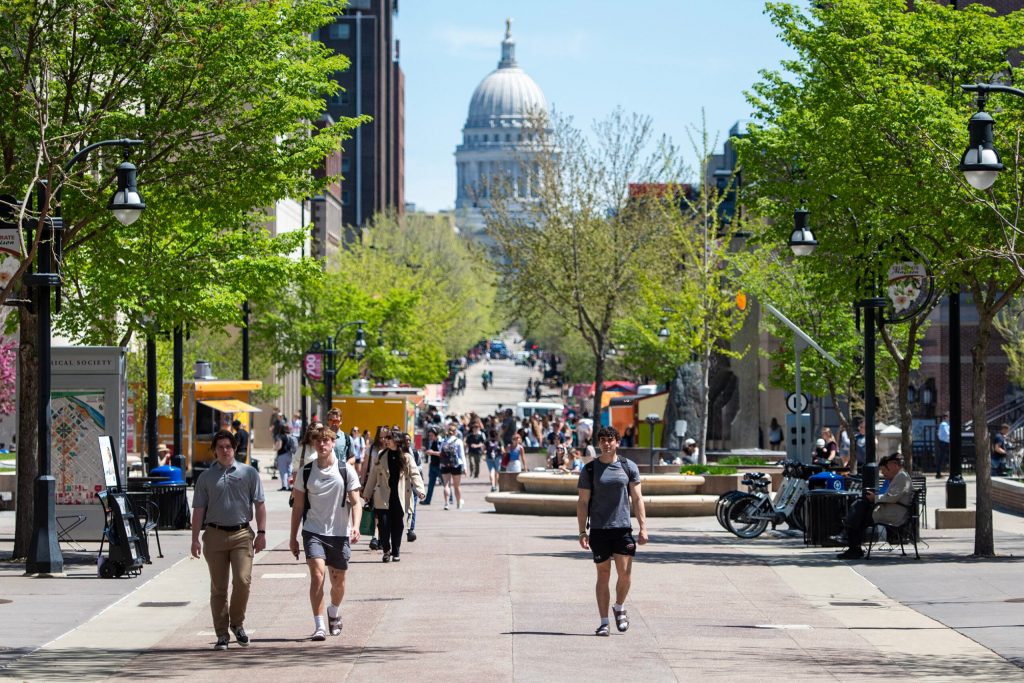UW-Madison Sees 30% Drop In New International Students
With delays in visa processing, travel bans and threats of deportation, fewer students are traveling overseas
The University of Wisconsin-Madison saw a sharp drop in the number of new students attending from overseas this fall, the decline coming after college officials voiced concerns about the impact of Trump administration policies on international enrollment.
In April, UW-Madison Chancellor Jennifer Mnookin penned an op-ed after more than two dozen student and alumni visas were terminated.
Mnookin called the move “arbitrary and unjust,” and said the international students on campus brought ideas, energy and determination to campus.
“In many cases, they stay and give back right here in Wisconsin, advancing science, caring for patients, building our communities and strengthening our state,” Mnookin wrote.
At the time, it was unclear what the future would bring for the campus’ international population. UW-Madison has been building its international student program, growing it from about 6,000 students in 2020 to nearly 8,000 students last year.
But this fall, with delays in visa processing, travel bans and threats of deportation, UW-Madison’s freshman class has nearly 36 percent fewer international students than it did last year.
University officials have declined to comment on specific numbers, only saying they’ve seen “modest declines” in graduate and international student enrollments that are in line with institutions across the country.
Universities across the United States are reporting nearly 20 percent fewer international students, according to an analysis by The New York Times.
But UW-Madison enrollment reports show declines across the university.
Last year’s freshman class had 506 international students. This year there are 325.
The number of master’s degree students from overseas have also fallen by more than 300 people, or 21 percent.
Overall, international enrollment decreased by approximately 500 students, from 7,957 in 2024-25 to 7,446 this school year.
Haoming Lyu is an electrical engineering major who was born in Beijing. Lyu arrived in Madison four years ago to study electrical engineering. While he loves the school, he said he’s not surprised there has been a decline in international students.
Lyu’s girlfriend is a Ph.D. student studying animal science. That’s on hold this semester because the lab she was working in was defunded, Lyu said.
“I’m nervous,” Lyu said. “I’m not sure what the new rules will be or what the future will bring.”
Besides losing the perspective international students bring, UW is also losing the tuition. International students are not eligible for federal financial aid, and pay far more to attend the university than in-state students.
Tuition for an undergraduate Wisconsin resident is about $12,000 a year. An international student pays about $40,000.
The school has spent years building up its international enrollment. In 2020-21, there were just under 6,000 students attending UW-Madison from outside the U.S., according to enrollment data.
In a statement, spokesperson John Lucas said the university was proactive over the summer to support international enrollment, visa acquisition and travel to Wisconsin to help offset uncertainty over the climate for international students and changes to visa policies.
“International students bring research expertise and global perspectives that strengthen UW–Madison’s academic excellence and enrich campus life for all students,” Lucas said.
A federal database tracking international students shows the increase in the total number of international students was 23 percent smaller this fall, compared with the same period last year.
The same database shows what countries students are coming from.
In Wisconsin, the largest group of international students, 352, are from China. India sends the second highest number of students with 195 reported. South Korea, Vietnam, Bangladesh, Saudi Arabia, Malaysia and Nepal also had double-digit numbers.
UW-Madison sees more than 30 percent decline in international freshman students was originally published by Wisconsin Public Radio.
If you think stories like this are important, become a member of Urban Milwaukee and help support real, independent journalism. Plus you get some cool added benefits.




















